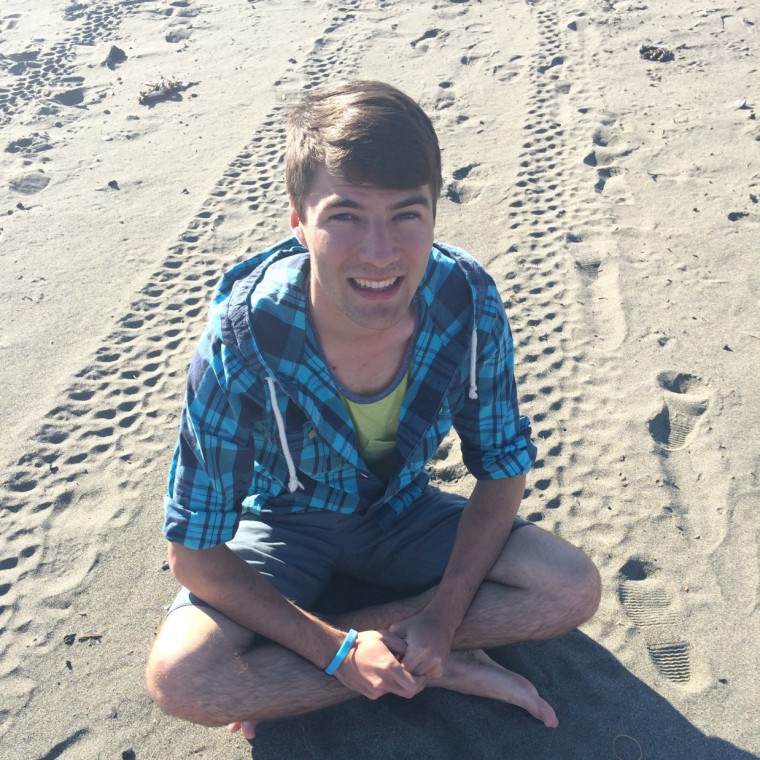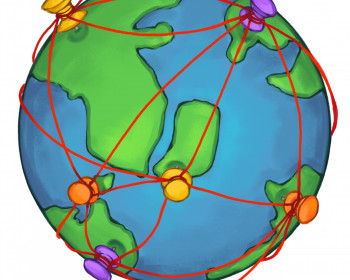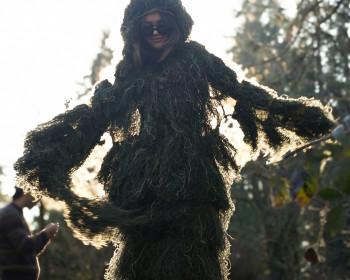Summer student research: Designing crystallographic labs
Owen Phillips ’16 is working with Professor of Chemistry Louis Kuo to design exciting lab assignments for chemistry students, while also studying crystals. He reflects on this experience in the following Q&A.
Open gallery

Lewis & Clark students remain closely engaged with their fields of study during the summer months, and many make meaningful contributions to scholarship by collaborating with faculty on innovative research. Owen Phillips ’16 is working with Professor of Chemistry Louis Kuo to design exciting lab assignments for chemistry students, while also studying crystals. He reflects on this experience in the following Q&A.
What are you researching?
My research involves the creation of crystal-yielding labs for three chemistry courses—general chemistry, organic chemistry, and inorganic chemistry—that can be easily run through the department’s X-ray diffractometer (XRD). The XRD provides an in-depth and tangible analysis of molecules, allowing students to better understand molecular interactions.
What initially sparked your interest in this project, and how does it relate to your previous coursework?
I worked with the XRD when taking general chemistry, though nowhere near the extent to which I am working with it now, and welcomed the opportunity to become much more familiar with it. I think that this project does a great job of combining science and art, which is another reason why it appealed to me. Growing crystals requires a fair amount of chemical knowledge and technique, but also the patience and creativity of an artist.
How has your Lewis & Clark education been enhanced by close collaboration with faculty?
Being chosen to work on this lab by a professor who has taught me in a class setting was really the ultimate compliment. Working with someone that you are comfortable with makes the job and learning easy and pushes me to want to work harder.
Does your research have potential to be applied in the real world or to influence other work in your field?
X-ray diffractometry was essential to the discovery of DNA structure and, as I just recently learned, accounts for 28 Nobel Prize winners. Also, 2014 happens to be the “year of crystallography.” Crystallography allows for a really intense and up-close look at the way that chemical compounds are built, and therefore how and why they interact in the ways that they do. In addition to running my own crystals through our XRD, I have been running those of my lab mates, who are working on compounds that break down neurotoxins. This has shown me firsthand that the field of XRD is widely applicable.
How will this research experience hopefully impact your future studies or professional pursuits?
Now that I’ve had the chance to really jump into crystallography, I’m hoping to continue research in the field. Most immediately, I’d like to find a crystallographic project for my senior thesis. I also hope to attend a conference next summer regarding the software that is necessary to further analyze data given by the XRD.
About the Rogers Science Research Program
The John S. Rogers Science Research Program allows students to pursue graduate-level research in the natural and mathematical sciences. It emphasizes strong communication skills, requiring students to publicly present their findings. This summer, more than 50 students are being sponsored to study such topics as memory formation, cybersecurity, and the impact of nicotine on flies.
“We’re not asking you, ‘What’s the answer?’ We’re saying, ‘What’s the question?’” said Michael Broide, director of the Rogers program and chair of the physics department. “I think what sets our program apart is that regardless of what project you are on, we’re all going to come together as a group to present what we’re doing in as accessible a way as possible. In science, it’s such an important skill to be able to explain cogently what you’re doing.”
Students make their final research presentations at the Rogers summer science poster session, held in conjunction with the Science Without Limits Symposium. Scheduled for September 17, the poster session is free and open to the public.
Katrina Staaf ’16 contributed to this story.
More Newsroom Stories
Public Relations is located in McAfee on the Undergraduate Campus.
MSC: 19
email public@lclark.edu
voice 503-768-7970
Public Relations
Lewis & Clark
615 S. Palatine Hill Road MSC 19
Portland OR 97219

